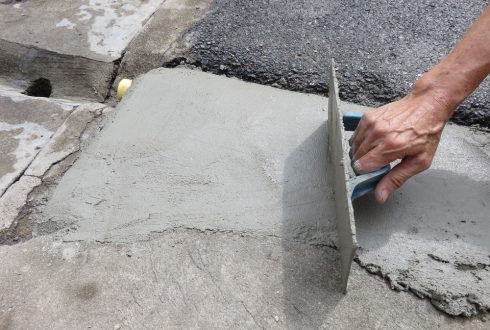Concrete Repairs
Concrete Repairs
What to Consider When Planning for Concrete Repairs
Concrete repairs are essential for maintaining the structural integrity and aesthetics of concrete surfaces.
Common Concrete Issues
• Cracks: cracks can develop due to various factors such as shrinkage, settlement, freeze-thaw cycles, or structural overloading.
• Spalling: spalling occurs when the surface layer of concrete chips, flakes, or peels away, often due to moisture infiltration or chemical exposure.
• Scaling: scaling is the loss of the surface layer of concrete, resulting in a rough and pitted appearance, typically caused by freeze-thaw cycles or improper finishing.
• Joint Damage: expansion joints and control joints may deteriorate over time, leading to uneven surfaces and potential safety hazards.
Factors Affecting Concrete Repair
• Surface Preparation: proper surface preparation, including cleaning, roughening, and removing contaminants, is essential for effective concrete repairs.
• Material Selection: choosing the appropriate repair materials based on the type and severity of the damage, as well as environmental conditions and performance requirements.
• Climate and Weather Conditions: considering temperature, humidity, and precipitation levels during the repair process to ensure proper curing and adhesion of repair materials.
• Structural Evaluation: conducting a thorough assessment of the underlying structure and determining the root cause of the concrete damage to implement long-lasting repairs.
Concrete Repair Methods
• Crack Repair: cracks can be filled and sealed using epoxy injections, polyurethane sealants, or specialized concrete repair mortars.
• Overlay Systems: thin overlays of polymer-modified or microtopping concrete can be applied to resurface and repair damaged or deteriorated concrete surfaces.
• Patch Repair: damaged areas of concrete can be removed and replaced with fresh concrete or repair mortars to restore structural integrity and aesthetics.
• Joint Repair: damaged expansion joints or control joints can be repaired or replaced to prevent further deterioration and ensure proper functionality.
• Spall Repair: spalled areas of concrete can be repaired by removing loose material, cleaning the surface, and applying repair mortars or coatings to restore the surface.
Preventive Maintenance
• Regular inspections of concrete surfaces to identify early signs of damage or deterioration.
• Implementing proactive measures such as applying sealants, waterproofing coatings, and protective coatings to prevent moisture infiltration and chemical exposure.
• Addressing minor defects and damages promptly before they escalate into more significant and costly repair issues.


